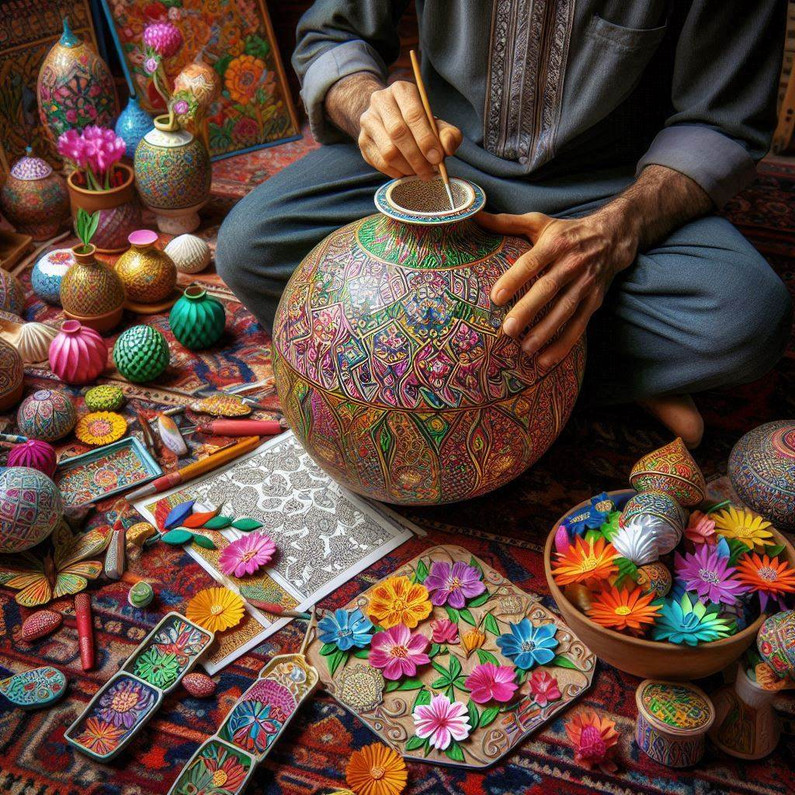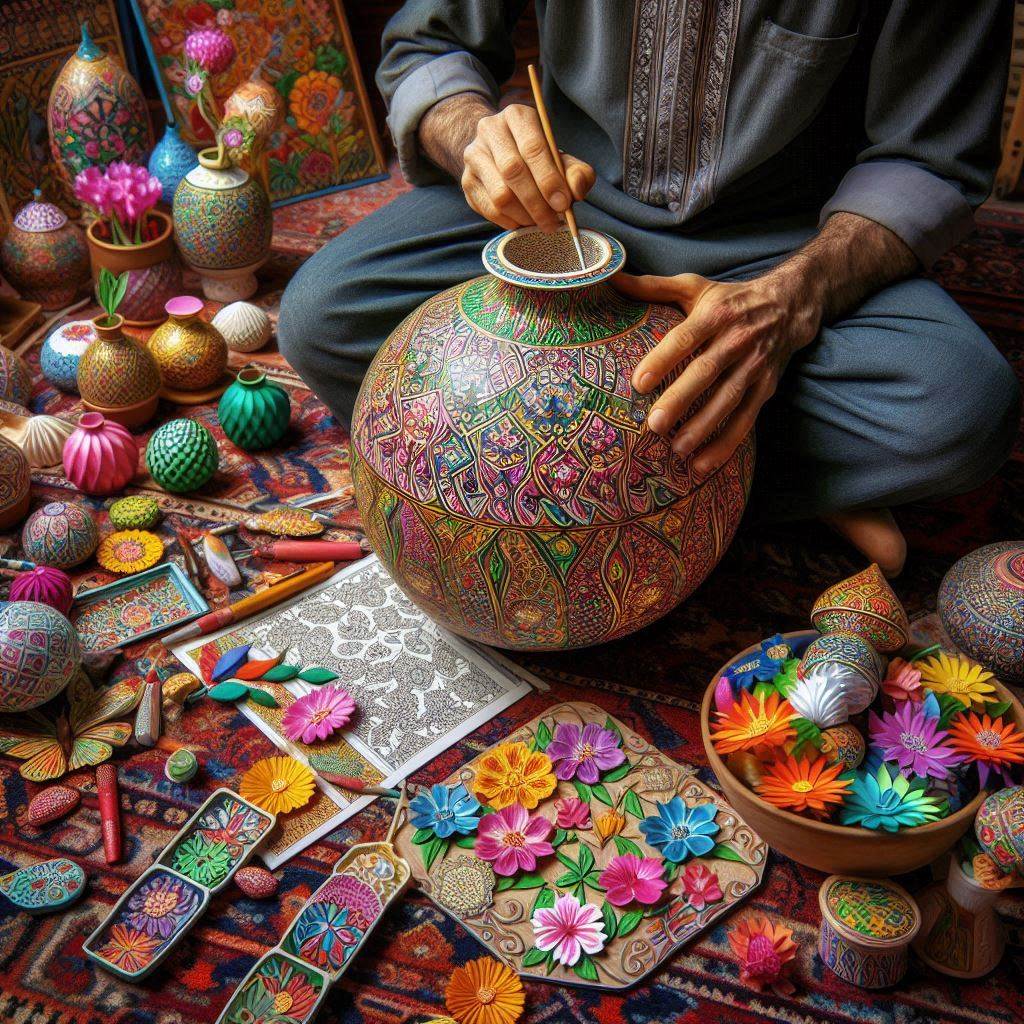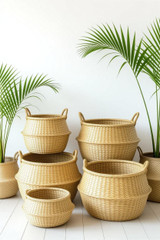The Art of Paper Mache: Crafting Beauty from Simplicity
Exploring the Timeless Craft of Paper Mache Art
Paper mache art, a timeless and versatile craft, has captivated the hearts and minds of artists and enthusiasts for centuries. Originating in ancient China and later adopted by various cultures worldwide, paper mache, or "papier-mâché" in French, translates to "chewed paper." This delightful art form involves creating objects out of paper pulp or strips of paper bound with an adhesive, often resulting in stunning and durable works of art. In this article, we delve into the history, techniques, and contemporary applications of paper mache art, showcasing its enduring appeal and creative potential.
A Brief History of Paper Mache
Paper mache's origins can be traced back to ancient China, where it was used to create ceremonial masks and helmets. The technique soon spread to Persia, Japan, and eventually Europe, where it gained popularity during the 18th century. In Europe, paper mache was employed to craft everything from decorative furniture and doll heads to architectural elements and carnival masks. Its lightweight yet sturdy nature made it an ideal medium for a wide range of applications, and its adaptability allowed artists to experiment with various forms and styles.
Techniques and Materials
Creating paper mache art involves several basic steps, yet the possibilities for creativity are endless. The most common techniques include:
1. **Strip Method:**
This involves layering strips of paper, typically newspaper, soaked in a glue mixture over a mold or armature. The adhesive can be a mixture of flour and water, white glue, or a commercially available paper mache paste.
2. **Pulp Method:**
This method uses a pulp made from soaked and blended paper, which is then mixed with a binder like glue. The pulp can be sculpted directly or applied over a mold to create intricate shapes and textures.
3. **Combination Method:**
Artists often combine the strip and pulp methods to achieve detailed and refined finishes. The strips provide structure, while the pulp allows for more intricate designs and smoother surfaces.
Contemporary Applications
Today, paper mache art has evolved beyond traditional forms, finding a place in contemporary art, education, and sustainable design. Here are a few modern applications:
1. **Fine Art:**
Contemporary artists use paper mache to create large-scale sculptures, installations, and mixed-media pieces. Its versatility allows for experimentation with form, texture, and color, resulting in unique and thought-provoking artworks.
2. **Education:**
Paper mache is a favorite in schools and community centers due to its accessibility and low cost. It provides an excellent medium for teaching basic sculpting techniques, encouraging creativity, and fostering environmental awareness through recycling.
3. **Sustainable Design:**
In an era of increasing environmental consciousness, paper mache offers an eco-friendly alternative to traditional materials. Designers use paper mache to create sustainable home decor, furniture, and even fashion accessories, highlighting the importance of recycling and upcycling.
4. **Theater and Film:**
Paper mache remains a staple in the creation of props, masks, and set pieces for theater and film productions. Its lightweight nature and ease of manipulation make it an ideal choice for creating elaborate and durable stage elements.
Getting Started with Paper Mache
For those new to paper mache, starting is easy and requires minimal materials. Here are some basic steps to get you started:
1. **Gather Materials:**
You'll need newspaper or scrap paper, adhesive (flour and water paste, white glue, or paper mache paste), a mold or armature (such as a balloon, cardboard, or wireframe), and paint or other decorative elements.
2. **Prepare the Adhesive:**
Mix flour and water to a thick, glue-like consistency, or use white glue diluted with water.
3. **Create the Base:**
Tear the paper into strips and dip them into the adhesive mixture. Layer the strips over your mold, smoothing out wrinkles and bubbles as you go.
4. **Build Layers:**
Continue layering strips until you achieve the desired thickness and strength. Allow each layer to dry completely before adding the next.
5. **Add Details:**
Once the base is dry, you can use paper pulp to add details and textures. Sculpt the pulp into desired shapes and attach it to the base.
6. **Finish and Decorate:**
After the piece is fully dry, sand any rough edges and apply paint or other decorative elements to complete your artwork.
Conclusion
Paper mache art, with its rich history and boundless creative possibilities, continues to inspire artists and hobbyists around the world. Its accessibility, versatility, and eco-friendly nature make it an appealing choice for both traditional and contemporary applications. Whether you're a seasoned artist or a beginner looking to explore a new medium, paper mache offers a rewarding and imaginative way to express your creativity. So gather your materials, unleash your imagination, and dive into the enchanting world of paper mache art !
Recent Posts
-
Order the Best Boss Day Gifts for Male & Female Bosses in the UAE from Craftihouse.com
Every year, Boss’s Day is the perfect opportunity to show appreciation for the people who lead, ment …13th Oct 2025 -
How This Gift Came to Life: The Story Behind Our Palm Leaf Baskets
How This Gift Came to Life: The Story Behind Our Palm Leaf Baskets In a world where everything is be …8th Oct 2025 -
Handmade Leather Key Chains – Timeless Souvenirs & Everyday Companions
Handmade Leather Key Chains – Timeless Souvenirs & Everyday Companions Introduction In a world where …25th Sep 2025





